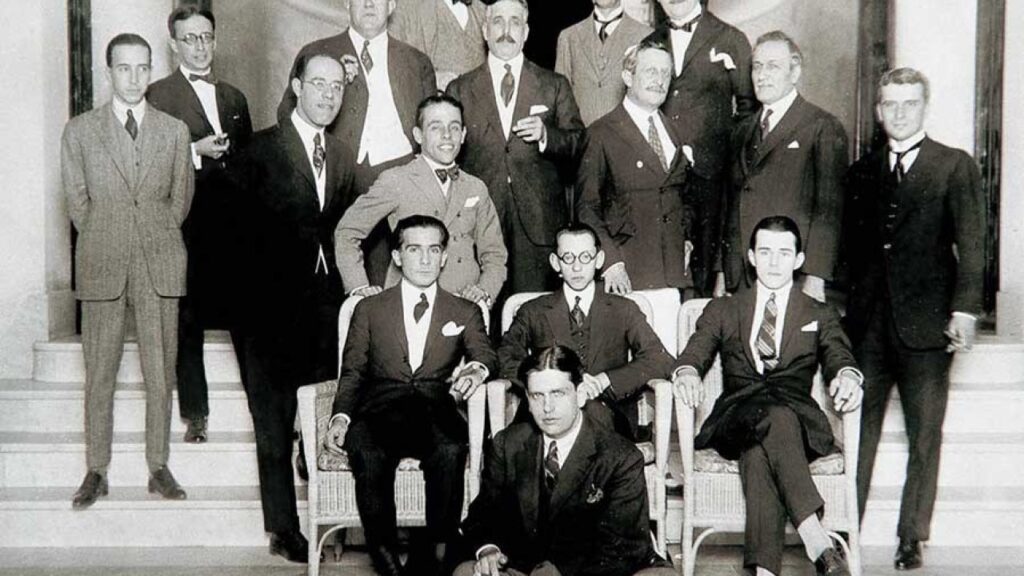The Modern Art Week (Semana de Arte Moderna, in Portuguese) was an art’s festival in São Paulo, Brazil, that ran from February 13th to February 17th, 1922.
It was properly marked as a new era for Brazilian art’s history. The modernism.
Teatro Municipal de São Paulo (São Paulo’s Municipal Theater) placed the historical event, which consisted of exhibiting plastic art, lectures, concerts and reading poems.

Paintings and sculptures were exposed in the Theater grand hall, shocking the people.
This event was the first public protest in Brazilian cultural history, fighting for a new and modern cultural background, progressively replacing the conservative ideas that were dominating the country for centuries.
Those discussions started 10 years before in the newspapers, magazines and smaller events.
Paulo Prado financed the brilliant idea, bringing some influential coffee exporters to invest in it with him.
The Modern Art Week, in addition, was a shout against the people who were importing art from Europe, instead of supporting local artists, and it marks the beginning of the “Brazilian industrial era” as some companies started to bring their factories to the country.
For Brazilian people, the event sparked a noble sentiment of a new era, a modern country.

Mario de Andrade, an extremely important Brazilian author, in one of his lectures, brought the idea of mixing concepts from Europe with a Brazilian cultural root to create something unique.
February 15th was a memorable highlight especially because of his lecture defending a “Brazilian way to speak Portuguese” cutting the umbilical cord with Portugal.
From my point of view, it happened as the country developed its own way to speak the language. (Brazil has 27 states and each one has their own accent, expressions and different words.)
Another intriguing thing that happened on that day was the reading of a poem called Os Sapos (The Frogs), making fun of the conservative Brazilian elite causing bewilderment in the public.
Group of Five

The Modern Art Week had many artists exposing their work, but especially five people started composing the first lines of the Brazilian Modernism movement.
Those five were Mario de Andrade, Oswald de Andrade, Menotti Del Picchia, Tarsila do Amaral and Anita Malfatti (We have talked about her already.) I would say they represent the minds behind the revolution.

They gathered during 1922, before and after the event to discuss contemporary trends in all kinds of arts, sometimes those meetings ended up in fervorous arguing, however, those “fights” helped them to enrich even more Brazil’s art.
According to Luiz Armando Bagolin, Mario and Oswald had a rivalry. They were good friends, but with lots of different points of view what represent the start of the group break up in 1929.
According to him, both fell in love with Tarsila, but she got married to Oswald, Luiz Armando has some letters from Mario to Tarsila and Oswald that can prove it.
“The elevation of friendship that eternally existed among you and me, our friendship was one of the noblest and cleanest, but now it is blurred forever. It is something that unfortunately does not straighten out for me.” Said Mario in one of those letters.

To conclude 100 years after it some researchers say that. This week hasn’t been over yet.
“Trying to think about what Brazilian art means, what this movement brought to our culture, during the hard times we are facing nowadays as our culture and art are discredited should be an extremely high priority.” Said the historian José de Nicola.
If you are Brazilian, do you think this week has transformed our history?
And if you are from another country, did you know about this particular chapter in the world’s art history?
Tell us in the comments.
Wrote by: Rafael de Rezende Basso







